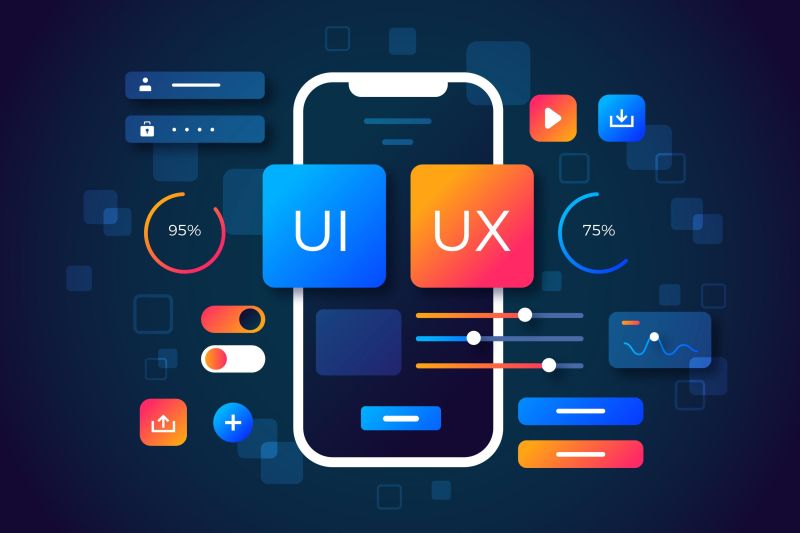
Here’s a 9-week UI/UX course syllabus that condenses the key topics into a structured format while maintaining an intensive learning pace. Each week focuses on core concepts, hands-on projects, and tools.
Week 1: Introduction to UI/UX Design
Day 1-2: Introduction to UI/UX Design
Overview of UI vs. UX
Importance of design thinking
Day 3-4: Fundamentals of User-Centered Design (UCD)
User needs, goals, and behavior
Case studies in good UX design
Day 5-7: Introduction to Design Tools
Overview of Figma, Adobe XD, Sketch
Setting up design environments
Week 2: UX Design Process & Research
Day 8-9: User Research Basics
Conducting interviews and surveys
Creating Personas and User Stories
Day 10-12: Information Architecture (IA)
Site maps, user flows, and card sorting
Tools for IA
Day 13-14: Wireframing Basics
Low-fidelity wireframes
Hands-on with Figma or Sketch for wireframing
Week 3: Prototyping & Testing
Day 15-17: Prototyping Essentials
Introduction to interactive prototyping
Creating click-through prototypes in Figma/Adobe XD
Day 18-19: User Testing Fundamentals
Usability testing types
Analyzing feedback from user tests
Day 20-21: Iteration Based on Feedback
Improving designs based on testing results
Week 4: UI Design Principles
Day 22-23: Visual Design Basics
Color theory, typography, and imagery
Understanding grid systems and layout
Day 24-25: UI Design Systems
Material Design, Human Interface Guidelines (HIG)
Atomic Design principles
Day 26-28: Designing Interactive UI
Micro-interactions and transitions
Tools for interaction design: Principle or Figma
Week 5: Advanced UX Design
Day 29-30: UX Strategy and Alignment
Defining project goals and KPIs
Balancing business goals with user needs
Day 31-33: Accessibility in UX Design
Designing for accessibility and inclusivity
Introduction to WCAG guidelines
Day 34-35: Advanced Wireframing & Prototyping
High-fidelity wireframes and advanced interactions
Testing with real users for feedback
Week 6: Interaction Design & Usability
Day 36-37: Usability Principles
Fitts's Law, Hick’s Law, and Gestalt principles in design
Day 38-39: Motion Design and Microinteractions
Adding motion to enhance UX
Tools for motion: Principle, Adobe After Effects
Day 40-42: User Testing of Interactive Prototypes
Conduct usability tests for microinteractions
Week 7: UI/UX for Emerging Technologies
Day 43-44: Designing for Voice Interfaces
UX for voice assistants (Alexa, Google Assistant)
Day 45-46: UI/UX for Augmented Reality (AR) & Virtual Reality (VR)
Designing immersive experiences
Key UX considerations for AR/VR
Day 47-49: Designing for Wearables & IoT
Designing for smaller screens
Interaction principles for smart devices
Week 8: Portfolio Development & Case Studies
Day 50-52: UI/UX Case Studies Review
Analyzing successful designs (e.g., Airbnb, Instagram)
Learning from real-world case studies
Day 53-55: Portfolio Building
Documenting projects for portfolio
Presenting work on Behance/Dribbble
Day 56-57: Capstone Project Planning
Selecting a project for final design
Conduct user research and create wireframes
Week 9: Capstone Project & Career Development
Day 58-60: Capstone Project Development
Complete a full design cycle (Research, Design, Prototype, Test)
Create a high-fidelity prototype
Day 61-62: User Testing & Final Iterations
Conduct final round of usability testing
Refine the design based on feedback
Day 63-64: Presenting Final Project
Present your capstone project with rationale and insights
Day 65-66: Career Development
Resume building for UI/UX roles
Preparing for UI/UX interviews (Mock interviews, portfolio reviews)
Tools Used in Course:
Design: Figma, Adobe XD, Sketch
Prototyping: InVision, Principle
Usability Testing: Maze, Lookback
Portfolio: Behance, Dribbble
This syllabus is designed to provide a comprehensive UI/UX education in 9 weeks, balancing theory with real-world applications, portfolio development, and a capstone project. Would you like to adjust any sections or include specific projects?
For a UI/UX design course, the eligibility criteria typically include:
This course can suit students, professionals, or even entrepreneurs looking to enhance their design and usability skills, especially in India's growing tech and startup sectors, where UI/UX design is in high demand.